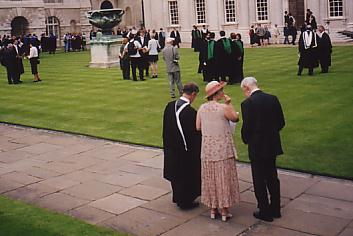About | ECITTT | Conference Programme | Abstracts (12.)
HYBRID MESHING AND APPLICATIONS IN COMPUTATIONAL ELECTROMAGNETICS
Jonas GustafssonEricsson Saab Avionics AB, Electromagnetic Technology
SE-581 88 Linköping
Sweden
The Finite Difference Time Domain method (FDTD) has been the dominating tool for numerical solutions of Maxwell's equations since the early 1980's. The great efficiency and simplicity of the method has made it a durable instrument in Computational Electromagnetics (CEM). However, the method suffers from one major deficiency: The discretization of space is restricted to Cartesian unit cells. This leads to a staircase approximation of the geometry, which can give rise to significant errors.
The General ElectroMagnetic Solvers (GEMS) project is a collaboration between Swedish industry and academia. Within the project hybrid methods for CEM have been developed. A remedy to the staircasing problem is provided by the introduction of an unstructured body conforming mesh in the vicinity of the geometry. In the unstructured region an explicit Finite Volume method or an implicit Finite Element method is used. This way the efficiency of FDTD is kept in the regions far away from the geometry, and the staircasing approximation is removed by the introduction of the unstructured grid.
In order to make the GEMS solvers applicable to industrial problems the actual numerical codes are not enough. In collaboration with FEGS Ltd a new hybrid meshing algorithm has been developed. The hybrid meshing algorithm provides a general tool for making the combined structured and unstructured meshes required by the GEMS solvers. The user can freely specify the size and location of the unstructured regions. The density of the mesh in the unstructured region can vary, and a smooth transition in size is made to fit the mesh density in the structured region. The hybrid meshing algorithm was incorporated in the CAE software CADfix.
Furthermore, in order to make the GEMS solvers an industrially adapted tool a graphical user environment has been developed. This provides a well validated chain from CAD and meshing, to running the solvers, and analysing the results. The graphical user interface is an intuitive way for the user to run the codes, and provides easy access to advanced numerical simulations using the GEMS solvers.




















